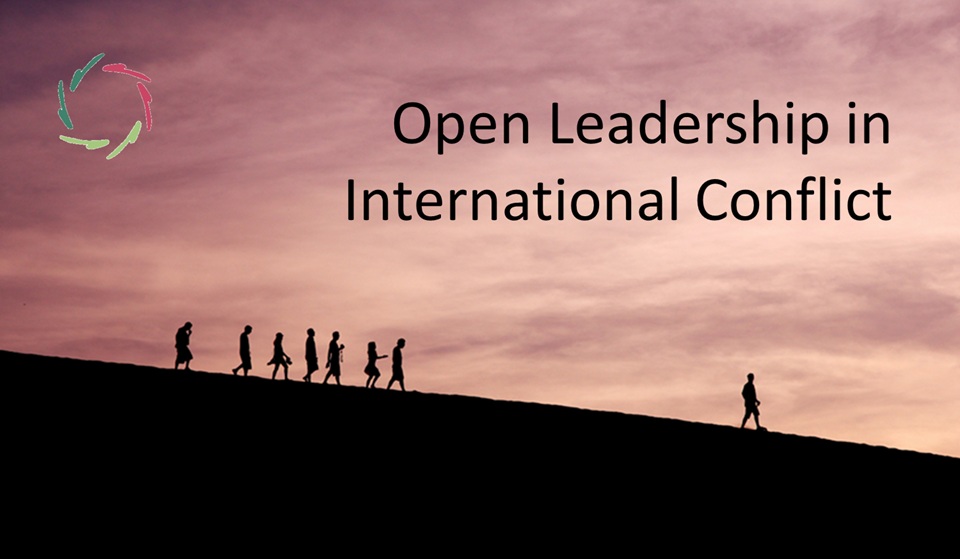Open Vision on Leadership

Leadership is created and supported at a deeper level by all members of a group, including the leader him/herself.
‘Leadership’ is not only a typical human concept but also a very remarkable one.
Humans are, beyond any doubt, profoundly social beings. For as long as we can remember – literally – we have been living in groups.
Even long before that time, most ape species have been known to form groups naturally… including choosing a leader.
This is by far the oldest profession in the world.
Leadership not only evolves around ‘who wants to dominate,’ who wants the best bananas or the prettiest females (or males). Leadership, certainly in a complex environment like the one that higher mammals live in, is not only a top-down process. It is probably safe to say that leadership may even be more of a bottom-up process. I.e., the members of a group (apes, anthropoid apes, humans) want someone to assume leadership at least as much as the leader him/herself.
This need is deeply ingrained. It is who we are.
A leader is, obviously, not just the one who ‘roars hardest or shows him/herself strongest.’
A leader meets the specific needs of a group openly. In other words, the group and the leader ‘define’ and ‘form’ leadership ― which is quite logical. Without people following, no one is being followed. Thus, a motivation to follow is imperative.
Motivation can be enforced, but this does not guarantee that a leader is in place. Whether in a company dealing with their employees or parents handling their children, leadership always happens spontaneously. It might seem obvious who will lead the company in the future, e.g., the daughter of the father-CEO. Nevertheless, an in-family successor does not implicate that a leader figure is born.
Now, let us take a closer look at the group.
What defines a group is that they feel the need to realize something as a group.
Do they want to thrive in a hostile environment? Then decisions need to be made to this end.
If at this moment you are thinking: ‘Aha, that is obviously a leader’s task,’ then guess again. This conclusion is only partly true. Ultimately it is the group that decides for itself as a group. This way, we again fall into a rather primitive way of thinking, yet a significant since very real one. Indeed: it is the group that wants to decide through the leader. ‘Through’ here means: the leader IS, at a deeper level, ‘the group.’
At this level, the leader identifies him/herself with the group and vice versa. There is an open interaction.
It strongly feels as if whatever the (true, open) leader decides is what the group has decided.
The wishes of the leader and those of the group spontaneously overlap (without losing their own identity). You likely have already experienced this and recognize the ‘open’ feeling that goes with it. This is what the group wishes and makes the group members trust their leader to act or decide accordingly.
Almost all studies about leadership characteristics have in common that the most appreciated trait is not technical expertise or willpower, but rather trustworthiness. This key factor allows the group to act and keep existing as a group so as not to vanish because of an untrustworthy boss.
This game of trust forms the chemistry of leadership.
On the part of the leader, the true difference lies somewhere within the person.
It is remarkable that, generally speaking, nobody – including researchers – seems to know how exactly the basic principles of good leadership have to be taught, not only enabling him to act as a leader but also exude leadership. This is reality, despite many theories. Although very recognizable, the prior statement is not always readily admitted. Leadership eventually appears to be ‘magic.’
(Almost) everyone is searching for do-techniques: “If you do this and that, then you become a leader.” This is very popular, but:
Are do-techniques not clouding our views, thereby closing doors instead of leading the way?
Like psychotherapy or coaching in general, as many studies show, the underlying conceptual theories (and related techniques) are not critical.
‘Open Leadership’ takes another approach. We try not to grasp what eventually cannot be grasped. Still, we don’t put aside rationality. On the contrary, we want to put it to good use. So: it is essential to take into account as many factors as possible in the most open and effective way possible.
By trying to keep an open vision at all times, you will develop an open vision of Open Leadership.


